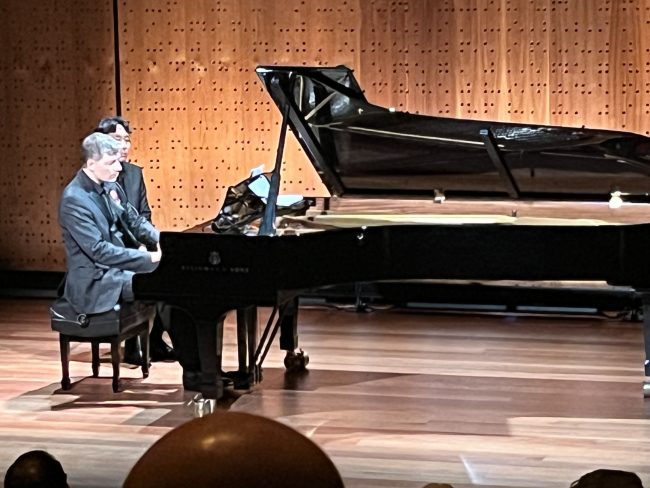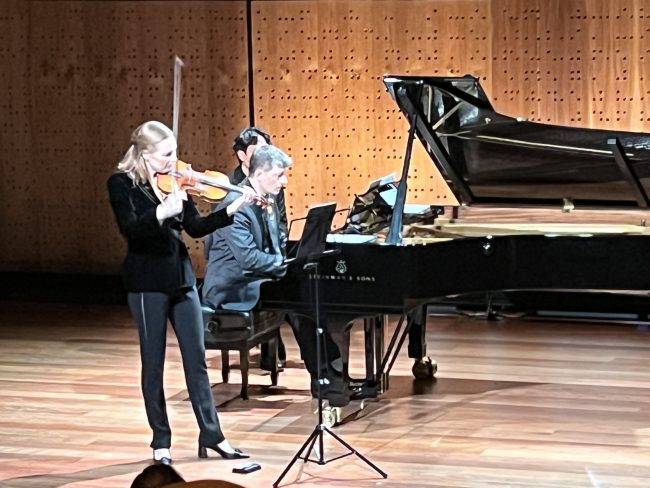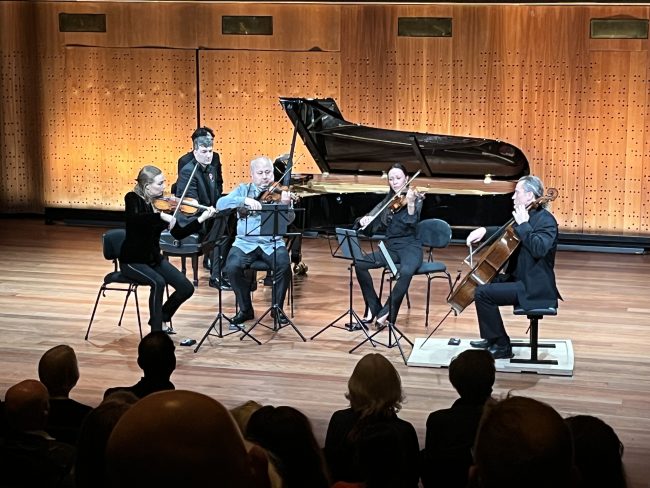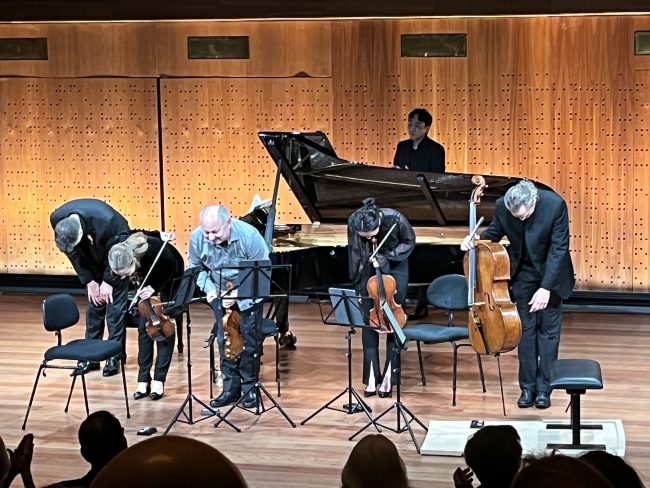Saturday 23 August 2025
Review by Paul Neeson (Arts Wednesday)

When I saw the program for the latest ACO Up Close recital at The Neilson, I was curious as to the connection between Valentin Silvestrov and Dmitri Shostakovich. Yes they were both Soviet era composers (although 30 years apart), one was Ukrainian, the other Russian. But the link, of course was our featured soloist for the night, Russian-born pianist Konstantin Shamray.
Konstantin first came to the attention of Australian audiences in 2008 when he won First Prize and the People’s Choice Award at the Sydney International Piano Competition. He now resides in Melbourne as senior lecturer in Keyboard Performance at the Melbourne Conservatorium of Music. It seems only natural that he would champion two great composers for the piano in this recital.
Silvestrov’s Three Bagatelles for Piano Op.1 was composed in 2005. The work comprises three short works for solo piano that are wistful in nature and quiet in tone. They are reminiscent of the music of Dmitri Kabaslevsky in that they are melodic and the only nod to modernism is the occasional unexpected key change. In Shamray’s large and gentle hands they evoked nostalgia for a more peaceful and happier time, falling somewhere between a lullaby and a soft folk tune.

ACO Principal Violin, Satu Vänskä joined Shamray onstage for more Silvestrov, this time two movements from his Five Pieces for violin and piano, composed in 2010. These works, like the Bagatelles do not sound like 21st Century music. Again it harks back to a warmer nostalgic memory. As Silvestov said “I do not write new music. My music is a response to and an echo of what already exists.” He rejected the avant-garde and focused instead on the lyrical quality of music, not pre-conceived technical concepts. Vänskä and Shamray certainly captured that lyrical quality in their performance.
Then suddenly we were thrown unexpectedly into the harsh sound world of Shostakovich. With only a barely perceptible break they segued into a selection of Shostakovich’s 24 Preludes: Op.34. Originally written for solo piano, we heard the 1930’s arrangement for violin and piano by Dmitri Tsiganov. Disjointed phrases, harsh dissonances and complex changes of rhythm and metre was where we found ourselves. We were right in the middle of modernism and the (Soviet friendly) avant-garde. Our two soloists were quite comfortable making that awkward transition with consummate ease.
The rest of the string quartet (Ilya Isakovich, violin, Amanda Verner, viola and Julian Thompson, cello) joined us next for a seemingly disparate inclusion of a movement from JS Bach’s The Art of Fugue. This gave us a refreshing palette cleanser in the midst of the Shostakovich, it also allowed the musicians to adjust to each other before the onslaught of Shostakovich’s Piano Quintet in G min.

From the dour opening movement we could hear the unity of the four strings and piano as they extracted every last drop of melancholy from the very Russian themes. 1940 was the year it was composed so Russia was not in a happy place and Shostakovich is reflecting the mood of the times. The Fugue of the 2nd movement was not one like the joyous uplifting fugue of Bach built on mathematical genius and adoration of God. It was instead like the individual branches of a creeping climbing vine, each vying for the precious light, wrapping themselves around each other, competing against and thwarting the others if required.
But the Scherzo 3rd movement is the one that stays in your mind. The muscular rhythms propel us through a whirring of colour and grotesque dance, typical of the master. The tones in the upper piano and strings were so brittle you thought they would shatter into shards of glass, being arrested only by a series of violent syncopated chords. And almost completing a full circle back to the earlier Silvestrov, the Piano Quintet concludes with a gentle lullaby cadence.

A thoughtful recital from the talented members of the ACO. While not a program for everyone, it was challenging and rewarding at the same time. The crowd at the Neilson was definitely up for that kind of fare and they weren’t disappointed. Was there a subtle political message in the programming of the Russia / Ukraine binary? Or was it just celebrating two gifted composers who both suffered under the Soviet regime? I suspect the latter.